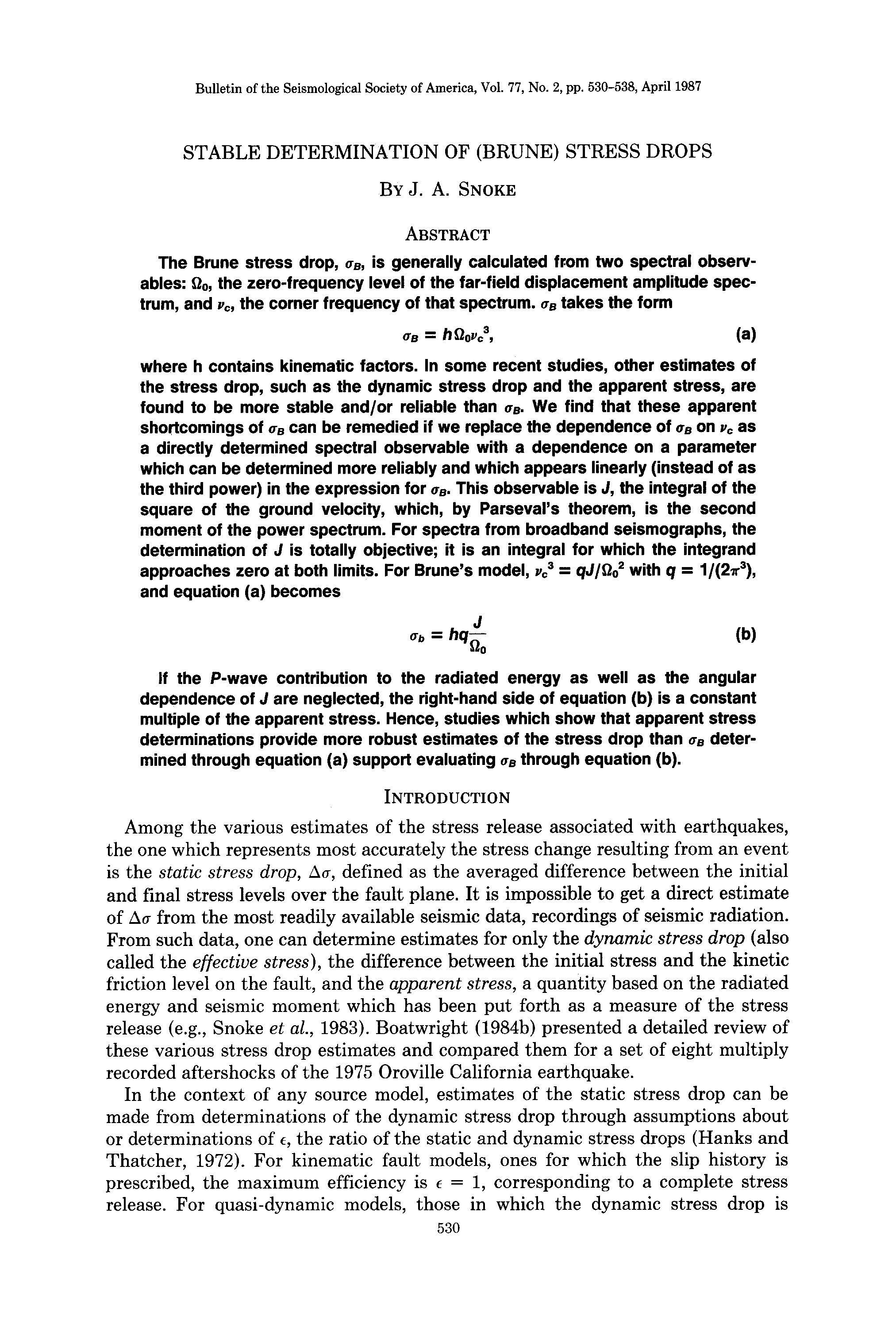Abstract
The Brune stress drop, σB, is generally calculated from two spectral observables: Ω0, the zero-frequency level of the far-field displacement amplitude spectrum, and vc, the corner frequency of that spectrum. σB takes the form
where h contains kinematic factors. In some recent studies, other estimates of the stress drop, such as the dynamic stress drop and the apparent stress, are found to be more stable and/or reliable than σB. We find that these apparent shortcomings of σB can be remedied if we replace the dependence of σB on vc as a directly determined spectral observable with a dependence on a parameter which can be determined more reliably and which appears linearly (instead of as the third power) in the expression for σB. This observable is J, the integral of the square of the ground velocity, which, by Parseval's theorem, is the second moment of the power spectrum. For spectra from broadband seismographs, the determination of J is totally objective; it is an integral for which the integrand approaches zero at both limits. For Brune's model, vc3 = qJ/Ω02 with q = 1/(2π3), and equation (a) becomes
If the P-wave contribution to the radiated energy as well as the angular dependence of J are neglected, the right-hand side of equation (b) is a constant multiple of the apparent stress. Hence, studies which show that apparent stress determinations provide more robust estimates of the stress drop than σB determined through equation (a) support evaluating σB through equation (b).






